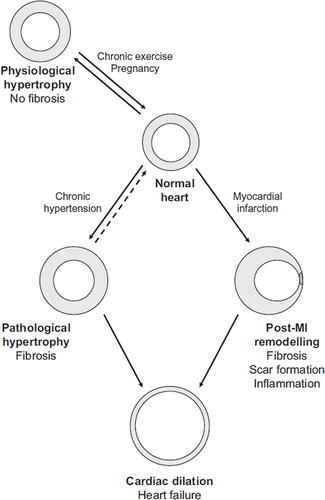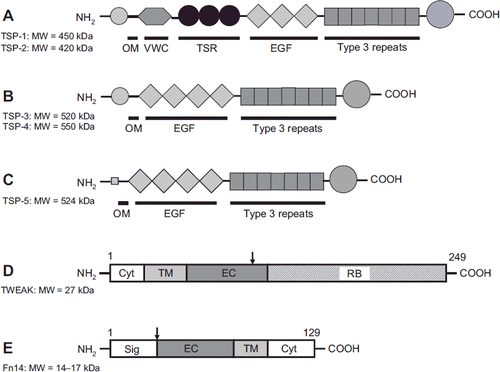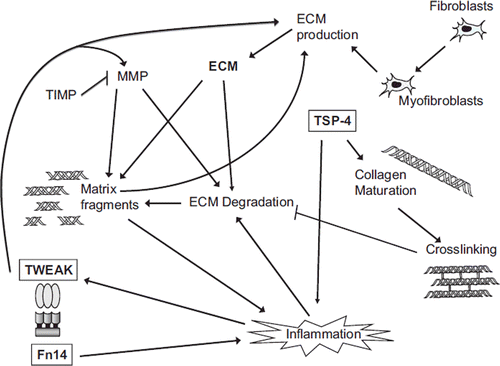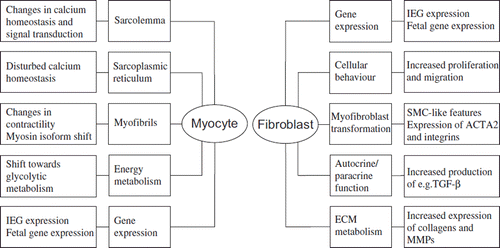Figures & data
Figure 1. Cardiac remodelling plays a crucial role during development of heart failure. Cardiac remodelling occurs most commonly as a result of either prolonged hypertension or myocardial infarction and also in physiological conditions, such as during pregnancy.

Figure 2. Schematic representation of cellular and molecular changes in the heart during hypertensive hypertrophy and after myocardial infarction. In the hypertensive heart, the hypertrophy of cardiomyocytes and the transition of fibroblasts to myofibroblasts are accompanied by an increase in the amount of ECM, which leads to fibrosis. Inflammation, cell death, and scarring are integral parts of post-MI remodelling associated with subsequent hypertrophy and fibrosis of the non-infarcted area.

Figure 4. Schematic structures of TSP proteins, TWEAK, and Fn14. A: TSP-1 and TSP-2; B: TSP-3 and TSP-4; C: TSP-5; D: TWEAK; and E: Fn14 protein. OM = oligomerization domain; VWC = von Willebrand factor C type domain; TSR = thrombospondin repeats; EGF = EGF-like repeats; Cyt = cytoplasmic domain; TM = transmembrane domain; EC = extracellular domain; RB = receptor binding domain; Sig = signal peptide. Arrow indicates a cleavage site. Modified from (Citation88–90).

Table I. Expression and localization of TSPs in adult heart in vivo (modified from (Citation37)).
Figure 5. Schematic view of selected factors and pathways involved in the regulation of cardiac ECM remodelling and the potential roles of TSP and TWEAK/Fn14 in the process. The amount of cardiac ECM is determined by the balance between ECM synthesis, deposited mainly by myofibroblasts, and degradation, and regulated by factors like MMPs and TIMPs. The quality of the myocardium is affected by several factors such as intermolecular cross-links between collagen fibres. In addition to established ECM modulating factors, the matricellular protein TSP-4 and the TWEAK/Fn14 pathway seem to have important effects on cardiac ECM structure and homeostasis.


